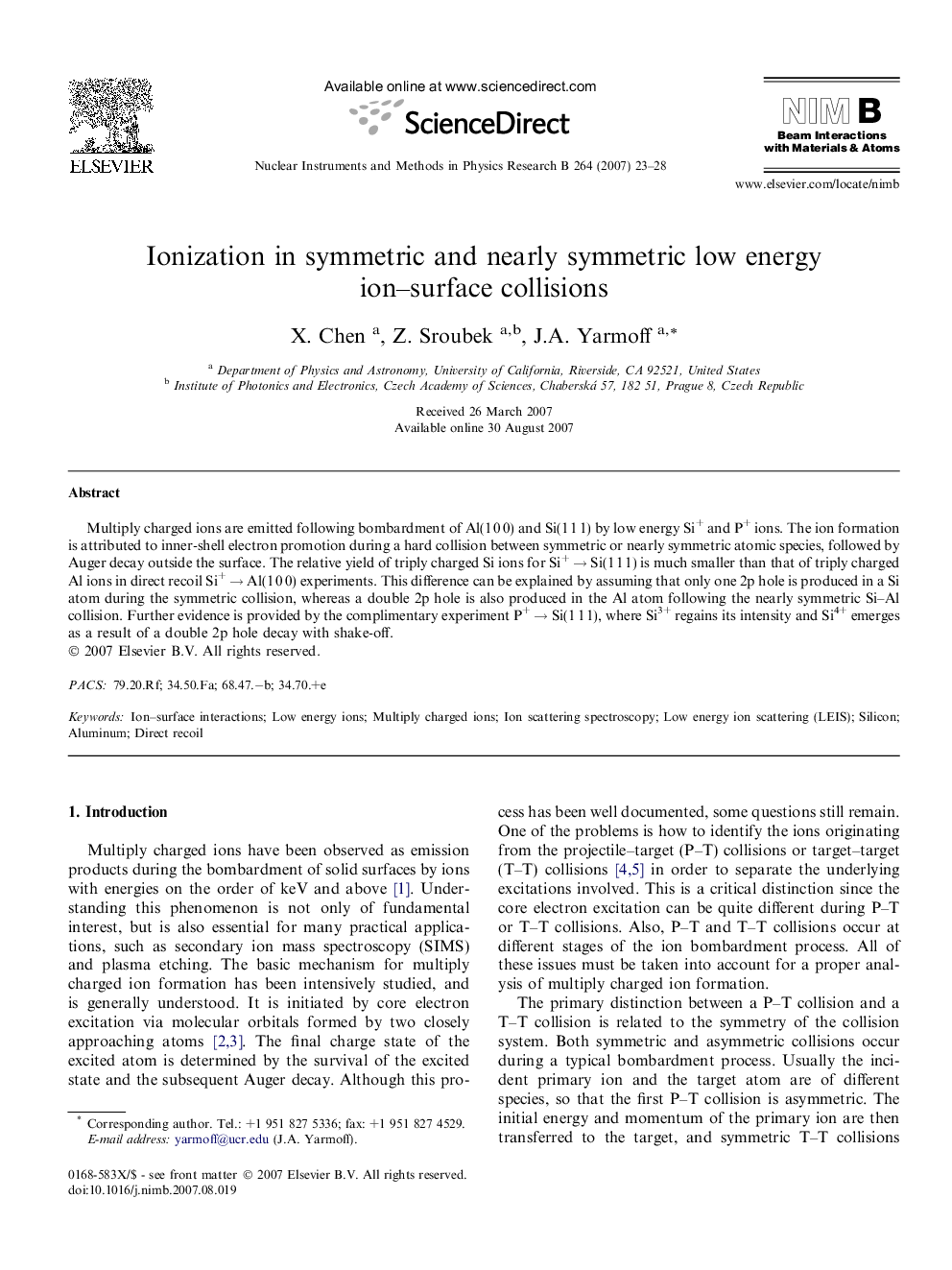| Article ID | Journal | Published Year | Pages | File Type |
|---|---|---|---|---|
| 1685565 | Nuclear Instruments and Methods in Physics Research Section B: Beam Interactions with Materials and Atoms | 2007 | 6 Pages |
Multiply charged ions are emitted following bombardment of Al(1 0 0) and Si(1 1 1) by low energy Si+ and P+ ions. The ion formation is attributed to inner-shell electron promotion during a hard collision between symmetric or nearly symmetric atomic species, followed by Auger decay outside the surface. The relative yield of triply charged Si ions for Si+ → Si(1 1 1) is much smaller than that of triply charged Al ions in direct recoil Si+ → Al(1 0 0) experiments. This difference can be explained by assuming that only one 2p hole is produced in a Si atom during the symmetric collision, whereas a double 2p hole is also produced in the Al atom following the nearly symmetric Si–Al collision. Further evidence is provided by the complimentary experiment P+ → Si(1 1 1), where Si3+ regains its intensity and Si4+ emerges as a result of a double 2p hole decay with shake-off.
